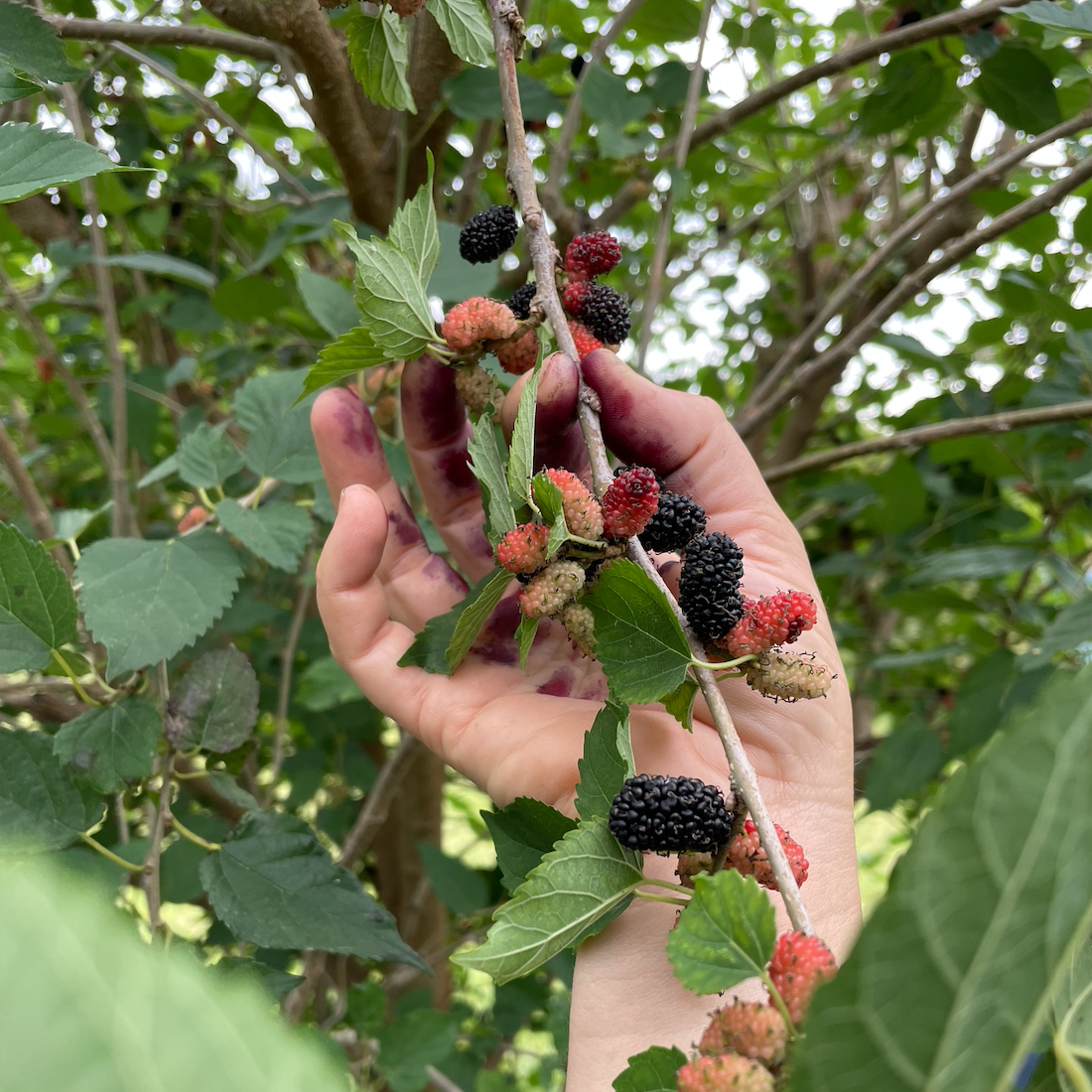Everbearing Mulberry
Morus
days to maturity:
plant spacing: 1 plant per 20 square feet
sunlight requirements: 6-14 hours
look out for: whiteflies
harvest notes: berries fall off the tree when ripe, pick daily
seasons: fall and spring
perennial
There aren’t many berries to be grown in here in South Florida. Sadly, most popular berries like blueberries, blackberries &raspberries don’t appreciate our heavy doses of humidity, but the Mulberry doesn’t mind one bit! This perennial medium sized tree grows quickly in most soil types and can be pruned to any shape or size. If allowed to grow without pruning it will become more of a bush with many stalks coming from the soil, but you can also prune the lower growth and make it shaped more like a tree. To keep the fruit low, prune the branches at eye or head height while its in its more dormant winter state. While fruiting you can pick ripe berries daily, before the birds get to them. They can be eaten out of hand or turned into jam or jelly, frozen, baked into pies, turned into ice cream, you name it and this berry can do it.
Mulberry trees also have multiple medicinal uses. Mulberry leaf has been used for thousands of years in Traditional Chinese Medicine (TCM) for its sweet, bitter and cold energetics. It is commonly associated with the Liver and Lung meridian and functions to clear lung heat (which manifests as a fever, headache, sore throat or cough) and to clear fire in the liver (which manifests as red, painful and watery eyes). Mulberry fruits have also been used in TCM for their cold bitter and sour energetics. The fruits are commonly associated with heart, kidney and liver and are tonic herbs for Yin deficiency. They are known to tone the blood, lubricate the intestines and to rehydrate the bodies fluids. Our favorite medicine to make with Mulberry leaf and fruit is a syrup rich in color like Elderberry, rich in iron and minerals and is a delicious cough treatment that you’ll crave again and again.
A number of pests that are Common in South Florida like mulberry trees. Keep an eye out for whitefly hanging out on the undersides of the leaves, and for a white cottony substance on the bark and trunk, which is indicative of a fungal issue. Mealybugs also like mulberries (they scrunch the leaves up from their center when present) and leaf webber worms might show up and eat the young leaves while also covering them with webbing.

